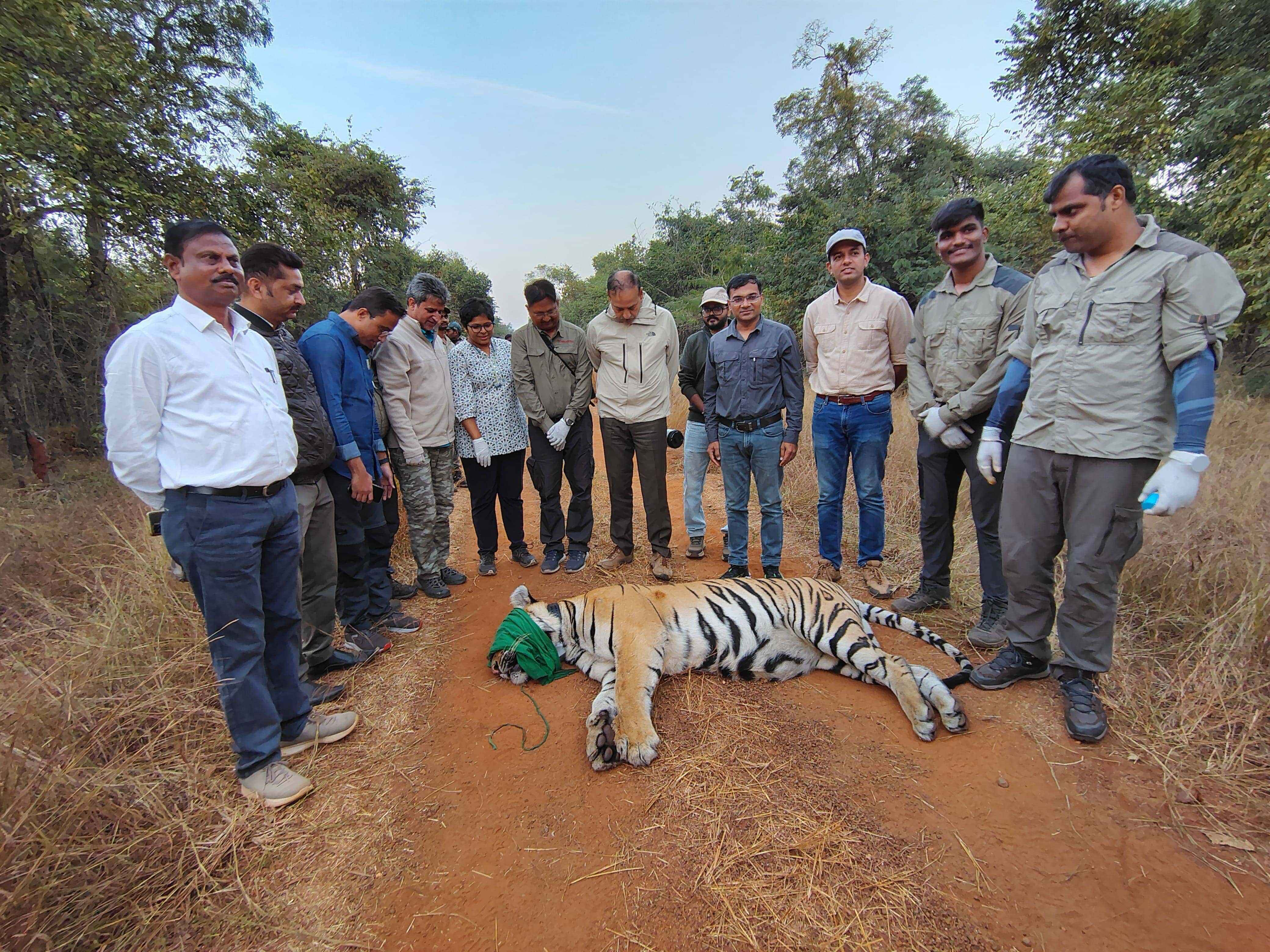The best safari is an ethical one!
Violation of any mentioned rules will
invite legal action and fine.





















In December 2024, four sub-adult tigers were radio-collared in the Tadoba-Andhari Tiger Reserve. Radio collaring is a powerful tool for wildlife conservation, enabling tracking of the movements and behaviours of animals in their habitats. For tigers, this technology provides crucial information that aids in their protection and management.
Radio collaring involves fitting a collar with a radio transmitter around the animal, which sends signals to monitoring teams. These signals enable tracking the tiger’s movements, territory, and behaviours from a distance. For the tigers in TATR, the collaring will help study their movements as they mature, providing insights into their dispersal patterns—the way young tigers leave their birth territories to establish their own. Understanding dispersal is vital for ensuring the survival of tigers, as it helps identify wildlife corridors that connect different habitats. These corridors are critical for genetic diversity and the long-term health of tiger populations, as they allow tigers to migrate, find mates, and access new territories.
By monitoring the radio-collared tigers, one can also assess the overall health of the population, track the use of prey resources, and identify key areas of habitat that require protection. This data is especially important in a reserve like TATR, where tigers are often in close proximity to human settlements. Radio collaring provides a tool for preventing human-wildlife conflict by enabling timely interventions when tigers venture too close to populated areas. In addition, real-time monitoring of the tigers’ movements helps deploy anti-poaching teams to high-risk zones, thus preventing illegal activities that threaten their survival.
While radio-collaring provides essential data, it is not without challenges. There is always a risk that the collars may malfunction or become damaged. Moreover, the cost of the equipment and the logistical challenges involved in tracking animals in remote areas pose additional hurdles. Despite these issues, the benefits far outweigh the drawbacks, as radio collaring has proven to be one of the most effective methods for understanding and protecting endangered species. The use of radio collaring also underscores the importance of integrating technology with conservation efforts to protect the world’s endangered species.
